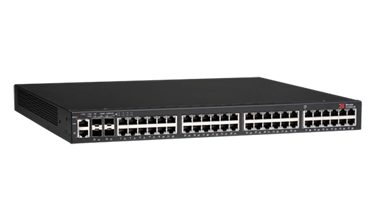AI-Powered Forecasting for Enterprises: Predicting Financial Outcomes

Enterprises must rely on precise forecasting to make informed decisions. Predicting financial outcomes accurately can mean the difference between thriving in a competitive market or facing unexpected setbacks. Traditional forecasting methods, though effective in the past, are often insufficient in handling the complexities and fast changes of modern markets. Enter artificial intelligence (AI).
AI-powered forecasting is revolutionizing how businesses predict financial outcomes. By leveraging advanced algorithms and vast datasets, AI offers enterprises an unprecedented ability to foresee financial trends and optimize decision-making.
The Basics of AI in Financial Forecasting
Artificial intelligence involves using machines and software to perform tasks that traditionally require human intelligence. In financial forecasting, AI algorithms analyze historical data, detect patterns, and make predictions about future outcomes. These systems adapt and improve over time, ensuring more accurate forecasts.
Some key components of AI in forecasting include:
Machine Learning (ML):
ML algorithms enable systems to learn from data without explicit programming. This adaptability allows continuous improvement in prediction accuracy.
Natural Language Processing (NLP):
NLP analyzes unstructured data, such as news articles or social media posts, to identify trends that might affect financial outcomes.
Deep Learning:
A subset of ML, deep learning utilizes neural networks to process complex datasets, uncovering insights that would be difficult for traditional methods to identify.
Why Traditional Forecasting Falls Short
Traditional financial forecasting relies heavily on historical data and static models. While this approach worked well in the past, it often struggles with today’s challenges, such as:
Data Overload:
Businesses generate massive amounts of data daily. Traditional methods lack the capacity to process and analyze such volumes effectively.
Dynamic Markets: Markets are more volatile than ever, influenced by a range of factors, including geopolitical events, technological advancements, and consumer sentiment.
Human Bias:
Manual forecasting is prone to cognitive biases that can skew results and lead to suboptimal decisions.
Benefits of AI-Powered Forecasting
AI-powered forecasting addresses these shortcomings, offering a host of benefits for enterprises:
Enhanced Accuracy
AI systems analyze extensive datasets, identifying subtle patterns and correlations that humans might overlook. This results in more precise forecasts, reducing the risk of costly errors.
Real-Time Insights
Unlike traditional methods that often rely on periodic updates, AI-powered tools provide real-time insights. This capability allows businesses to respond swiftly to changing market conditions.
Scalability
AI solutions can handle vast amounts of data, making them ideal for large enterprises with diverse operations. As a business grows, its AI tools can scale accordingly, ensuring consistent performance.
Cost Efficiency
Automating forecasting processes with AI reduces the need for extensive manual input. This not only saves time but also lowers operational costs.
Predictive and Prescriptive Insights
AI doesn’t just predict outcomes; it also suggests actionable steps to achieve desired results. For example, if a forecast indicates declining sales, the system might recommend strategies to mitigate losses.
Applications of AI-Powered Forecasting in Enterprises
Revenue Forecasting
AI can predict future revenue based on historical sales data, market trends, and external factors like economic conditions. These forecasts help businesses set realistic sales targets and allocate resources effectively.
Expense Management
Enterprises can use AI to forecast expenses, identifying areas where costs might increase. This insight enables proactive budget adjustments and cost-saving measures.
Risk Management
By analyzing market trends, competitor activities, and regulatory changes, AI systems help businesses anticipate risks and develop mitigation strategies.
Inventory Optimization
AI-powered forecasting tools predict demand patterns, helping businesses optimize inventory levels. This reduces the risk of overstocking or stockouts, improving overall efficiency.
Investment Decisions
AI provides insights into market trends, helping enterprises make informed investment decisions. Predictive analytics highlight opportunities with high potential returns while minimizing exposure to risks.
Challenges in Implementing AI-Powered Forecasting
While AI-powered forecasting offers numerous benefits, implementing these systems is not without challenges:
Data Quality
Accurate forecasting relies on high-quality data. Inconsistent or incomplete datasets can lead to flawed predictions. Enterprises must invest in robust data management systems to ensure reliability.
Integration with Existing Systems
Integrating AI tools with legacy systems can be complex and time-consuming. Businesses need a clear strategy to ensure seamless integration.
Skill Gap
Adopting AI requires skilled professionals who can develop, deploy, and manage these systems Additionally,Enterprises may need to invest in training or hire specialized talent.
Ethical Concerns
AI systems must be designed and used ethically. Transparency, data privacy, and fairness are critical considerations to avoid reputational and legal risks.
Best Practices for Implementing AI-Powered Forecasting
To maximize the benefits of AI-powered forecasting, enterprises should follow these best practices:
Define Clear Objectives
Before implementing AI, businesses must identify their goals. Thus, Whether it’s improving revenue forecasts or reducing operational costs, clear objectives guide the development of effective AI systems.
Invest in Quality Data
High-quality data is the foundation of accurate forecasting. Enterprises should prioritize data cleansing, integration, and validation processes.
Choose the Right Tools
Not all AI tools are created equal. Businesses should evaluate solutions based on their specific needs, scalability, and ease of integration.
Continuous Monitoring and Improvement
AI systems require regular monitoring to ensure optimal performance. Additionally, Businesses should analyze system outputs and make adjustments as needed to improve accuracy and reliability.
Foster a Culture of Innovation
Successful implementation of AI requires organizational buy-in. Moreover, Leaders should promote a culture that embraces innovation and encourages employees to adopt new technologies.
The Future of AI in Financial Forecasting
As technology advances, AI-powered forecasting will become even more integral to enterprise success. Future developments may include:
Enhanced Predictive Models: Advanced algorithms will offer even greater accuracy, factoring in variables such as climate change or social trends.
Increased Personalization: Enterprises will tailor forecasts to individual business units or customers, enhancing decision-making at every level.
Democratization of AI: As AI tools become more accessible, smaller businesses will also benefit from these capabilities, leveling the playing field.
Conclusion
AI-powered forecasting represents a transformative leap for enterprises aiming to predict financial outcomes with greater precision and efficiency. By harnessing the power of advanced algorithms, businesses can navigate the complexities of modern markets, mitigate risks, and seize opportunities. Furthermore, While challenges exist, a strategic approach to implementation ensures that enterprises can unlock the full potential of AI-powered forecasting, driving sustained growth and success in an advancing space.

Source: AI-Powered Forecasting for Enterprises: Predicting Financial Outcomes




